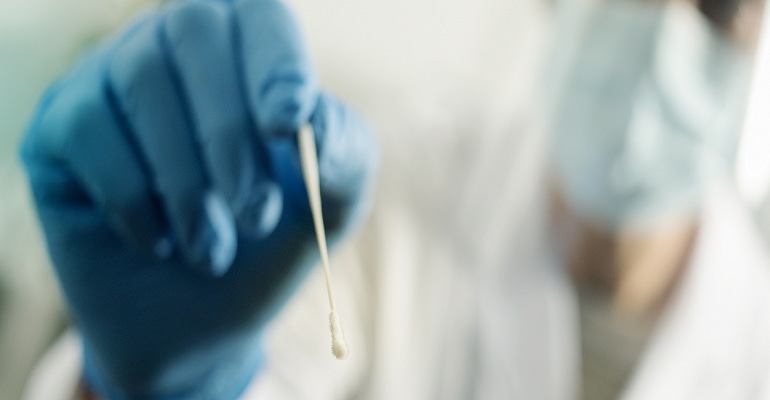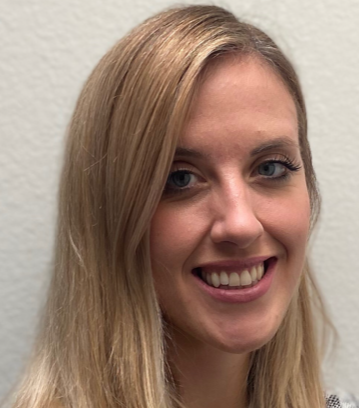3D-printing is an unsung hero in the war against COVID-19.

Well-suited to meet the localized needs of healthcare workers worldwide in record time, 3D-printing has accomplished a tremendous amount in the war against COVID-19. The sudden emergence of the global pandemic created unseen demands for PPE, ventilators, and other critical medical devices. Rising to the challenge, the 3D printing community quickly devoted their printers to rapid prototyping of all types of essential medical equipment and its manufacture. One such company leading this charge was Formlabs, a 3D printer developer and manufacturer, who launched its COVID-19 response efforts in March 2020 providing its cutting-edge 3D printers to medical device manufacturers, hospitals, and government health agencies to meet the overwhelming demand.
The past year has solidified 3D-printing’s important role in the growing medtech industry. I recently spoke with Gaurav Manchanda, director of healthcare at Formlabs, a prominent exhibitor at MD&M | BIOMEDigital, to discuss how they are aiding the fight against the global health crisis and what solutions attendees can look forward to learning about at their booth.


Hayley Haggarty: Formlabs is working closely with health systems and has been instrumental in designing, prototyping, and producing parts for clinicians that address supply chain shortages and today’s changing healthcare needs. How has Formlabs responded to the COVID-19 pandemic?
Gaurav Manchanda: Formlabs worked with Northwell Health and University of South Florida (USF) Health on the production of coronavirus test swabs. Once the swabs were tested and validated, the three parties shared the designs with other medical manufacturers to produce these swabs across the country and globe. In leveraging its network of users to print these swabs locally, Formlabs was able to create a distributed manufacturing network that could serve the communities most in need of these swabs directly. Based on estimates from USF Health, medical device manufacturers, hospitals, and government health agencies with Formlabs printers have produced approximately 40 million COVID-19 test swabs to date.
Throughout the pandemic, Formlabs has been in frequent contact with doctors and nurses interested in utilizing the Form 3B to create PPE components, test swabs, and other medical equipment. Most requests we are receiving from hospitals fall into three categories:
Testing – 3D printed parts can be used to develop components of test kits, such as swabs, needed to diagnose COVID-19. Compared to the traditional one-size-fits-all alternative, several 3D designs are being used by clinicians around the world as preferences for flexibility, breakpoint location, tip size, and the desired comfort vary.
Personal Protective Equipment – There are several components of masks and respirators that could be 3D printed to protect both the public and healthcare professionals. To date, one 3D-printable mask made with Formlabs BioMed Clear resin has “undergone review in a clinical setting and has been found appropriate” for use. It was evaluated by the Department of Veterans Affairs and is available for download from the National Institute of Health 3D Print Exchange.
Medical Equipment – This includes ventilators, spare parts, etc. Formlabs became the first 3D printer manufacturer to ever receive an Emergency Use Authorization (EUA) from the FDA for adapters that enable BiPAP machines to be used as ventilators. The adapters were designed by Northwell Health and deemed safe for clinical use when printed with BioMed Clear resin, which has been tested to ISO 18562 standards for gas pathways in healthcare applications.
Hayley Haggarty: How has the pandemic impacted the 3DP industry and what resulting changes will we see in the future?
Gaurav Manchanda: COVID-19 has highlighted the risks in the traditional medical supply chain system. We have now seen how 3D printing can quickly serve as a temporary “bridge manufacturing” solution during shortages, which demonstrates how it can de-risk supply chains moving forward. The response to the pandemic was a pivotal moment for 3D printing and manufacturing in general.
When supply chains were shaken and crucial parts were suddenly unavailable, 3D printing promised a rapid, effective way to address the disruption. Formlabs printers, for example, ramped up to produce thousands of ventilation system components, nasopharyngeal swabs, and more every week, easing supply shortages around the world. 3D printing also empowered agility as the landscape of the crisis changed; rather than being stuck in one rigid production cycle, doctors and medical professionals could advise on new or changing equipment needs and 3D printers could switch over production immediately.
The versatility and flexibility of 3D printing enabled the technology to offer bridge manufacturing for shortages of critical supplies - like test swabs. 3D printing was able to quickly take over the production of the vital test kit component and was the backbone of turnkey manufacturing facilities in the hardest-hit areas of the pandemic. Hospitals around the world used Formlabs 3D printers to produce swabs on-site and help track the spread of the disease in their community.
Hayley Haggarty: Your healthcare and life sciences portfolio of products reflects Formlabs’ dynamic and innovative nature. How does the company ensure prototyping, testing, and product development remain ahead of and shape this industry’s rapidly evolving landscape?
Gaurav Manchanda: As a company that enables innovation, the Formlabs team must think like innovators to anticipate the needs of its customers to develop the best possible 3D printing technology at the lowest possible cost. The best way to stay ahead of the evolving additive manufacturing landscape is by staying connected to our users. In healthcare applications that means frequent conversations with doctors and medical professionals to ensure we’re meeting their needs, from a technical, regulatory, quality, and clinical perspective, while planning for future needs. Formlabs is driven by its mission to expand access to digital fabrication to enable anyone to make anything. By having open lines of communication with members of the healthcare community, our team can see what pain points they are experiencing, allowing us to address those opportunities through product development.
Hayley Haggarty: Formlabs is exhibiting at MD&M BIOMEDigital, an all-new virtual event leading advancement in the medtech and biopharma sectors. What can attendees look forward to at your booth?
Gaurav Manchanda: Attendees can look forward to discussing the latest and greatest user stories and case studies from our medical device development customer community.
Hayley Haggarty: What excites you most about engaging with your community at the virtual event?
Gaurav Manchanda: Just as frequent conversations with medical and healthcare professionals helped us quickly respond to the growing NP swab shortage, events like this give us direct and open access to members of our community so we can better understand and anticipate their needs. 3D printing is constantly evolving – not only the technology but in terms of the variety of its applications. Every time we get to meet with our community, we’re amazed by the new ways people are using our technology, and freshly motivated to continue developing ways to power their work.
To further advance and fast-track widespread adoption,
Taking place April 6-7, Informa Markets – Engineering, the organizers of the industry-leading events BIOMEDevice and Medical Design & Manufacturing (MD&M), will present MD&M | BIOMEDigital, an all-new virtual conference and exhibition that will serve as an educational gathering for medical device engineers driving the progression of the world’s medtech and biotechnology. The virtual event will provide a critical meeting point for the global community featuring a virtual expo floor of 80 companies driving frontline product innovation and a robust conference agenda offering technical sessions curated around today’s challenges from integrating new materials and technologies into the 3D printing process to using Industry 4.0 analytics drive next-generation device functionality.
Register here and access exhibitor profiles, exclusive networking opportunities, and technical sessions that matter to you.
To schedule a meeting with Formlabs at MD&M | BIOMEDigital, please register for the event and reach out to Gaurav Manchanda, director of healthcare at Formlabs at [email protected].
About the Author(s)
You May Also Like





